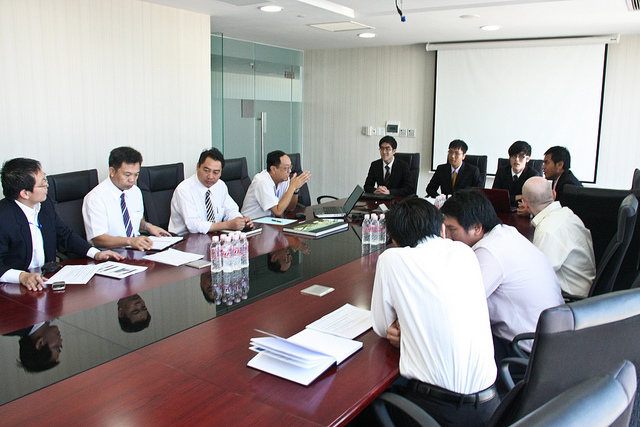When having to sell an idea or convince a C-level executive of something seems a bit overwhelming, then it may be important to remember some basics as to how to communicate effectively and (maybe) get your way. Usually, that one opportunity that you have to sit down with a c-level executive will be the only you have, so you better make the most of it. If the idea you are trying to sell is within your own organization, you can also read up on different ways to create beneficial work relations in the office, including with the CEO and the rest of the c-suite executives, which you can read more about on the Jason Hanold blog.
Get started on the right foot
Ask gently and be sure not to be pushy and impose a meeting or conference call from the first contact. If you come on too strong you may not get any type of response. A c-level executive will be willing to give you limited time on their agenda, but you have to get his or her attention first. You may want to get started by engaging in an activity that doesn’t require much time like requesting a referral or a connection to more information. Due to their role, this is actually something most C-suites like to do. Once they start to engage in the conversations you can develop a relationship little by little. Another good tip is to call them later on in the day, after they’ve gone through the different activities they have to get through when their morning starts. A good time to call a C-suite will probably be around 5-8 p.m. local time. Of course, keep in mind cultural differences as well, when deciding on when to reach out.
When putting the information together for them, consider the fact that most top executives will be reading this from a mobile device, be it a tablet or smartphone, so the content should be friendly for these smaller screens. Another thing to keep in mind, is that beyond being easy to read, it shouldn’t be too long. If a person with such limited time finds himself or herself scrolling through a long email on their phone, they will most likely lose their interest or simply not have enough time to keep reading through your email.
Lastly, it’s also important how you get in the front door, so having a trusted sponsor be the one to set up the appointment will be a good strategy. If you are able to have someone organize this meeting, and this person is able to give the c-level executive a good referral about what you have to say and that it’s worth their time.

Image courtesy of Yplatform at Flickr.com
Once you have their attention
You’ll usually have a limited time frame to get to know what they want or could want from what you have to offer them. So, be prepared to live by the 10/30 rule, which basically means to prepare a quick 10-minute presentation, for a 30-minute meeting. This will give them at least 20 minutes to ask questions and get a bit more engaged, which is what most c-suites like to do when they hear an idea. They love giving feedback, and while they do, this is the perfect opportunity to take notes and polish up your idea. You’ll also need to get very good at improvising. When you get feedback, you could be getting that priceless piece of advice that could be the difference between getting the executive’s attention or not. Understanding their needs and their world will be essential when
As you’re doing the presentation, be sure to eliminate as many slides as possible and leave only the most necessary information. Cutting to the chase, will ensure that you don’t lose the C-suite’s attention and that you make your time worthwhile. The information left should include the facts and this content should be full of information that will help the c-suite make up his or her mind about the particular topic you are talking about. Summarize the information until only the most relevant facts are left and you can push beyond the clichés and common wisdoms to the facts that really matter and set apart your idea from the rest.
Be prepared
When sitting in front of a CEO or any other c-level executive you must be sure to be prepared, because the CEO may not give you a pat on the back. So being prepared to hear something you weren’t expecting will be necessary. Despite the fact, that you never really know what kind of reaction you are going to get, you should always deliver your presentation with confidence. Be sure to have a plan B or C, just in case and of course to be prepared to answer any questions that are made during the meeting. Finally, turn all of those stats into real strategic information that the c-suite can visualize being implemented. Especially, today’s CEOs are more about the big picture than the details, because this has been handed down to managers who are experts at the technical side of the business. So, if you’re able to help them see how this idea can help the business grow and in turn bring revenues and profits to the organization, you’re already coming up ahead.

